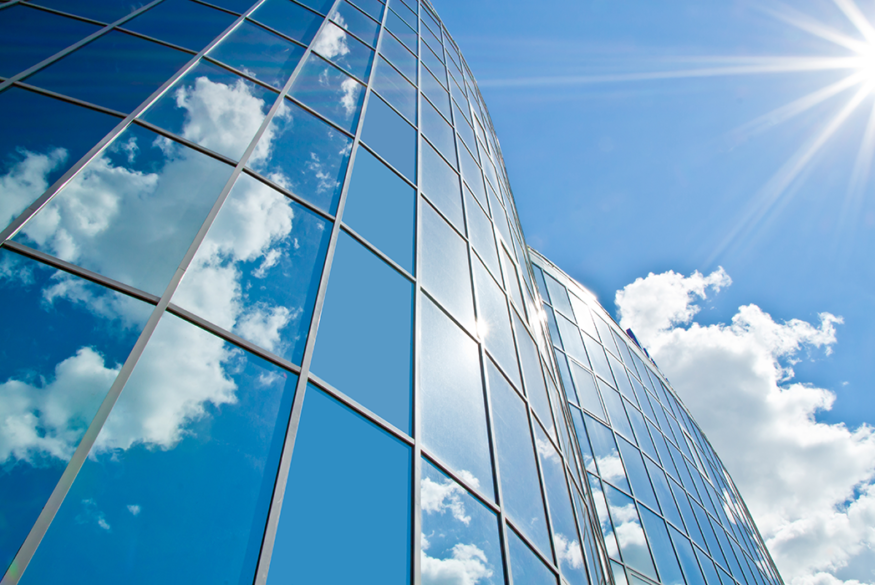Three Reasons to Prioritize Your Property’s Exterior
The exterior and interior of a building can sometimes be thought of as two separate spaces. Exterior maintenance is often deferred for more immediate, tenant-facing interior projects. However, the exterior and interior are highly connected and deferring maintenance on one could lead to new problems in the other. Energy efficiency, curb appeal and damage prevention are a few benefits to completing exterior maintenance. Here are a few reasons why deferring these jobs may lead to bigger costs in the future and how improving the exterior can make a major difference at a property.
Protecting Against the Elements
Water and air are two factors to consider when deciding on exterior maintenance jobs. Whether it is a preventative task or a repair, water and air damage can cause serious harm to a building’s façade. Water intrusion being at the top of the list. mDirector of Structural Engineering for PM&A Brian Rivers, PE, said that deferring maintenance around water intrusions can lead to more problems down the line.
“Ongoing or recurring leaks can result in damage to interior finishes or mold and indoor air quality issues,” Rivers said.
Waterproofing is one investment to consider. Director of Engineering with Lincoln Property Company Jesse Kave said they often recommend a water test to both find leaks and test newly-preformed repairs.
“We want to make sure we have a tight building envelope from a water proofing perspective, and we aren’t creating damage,” Kave said.
Air filtration is also a major concern. Kave said that maintaining the right pressure in a building can mean less damage in the future, cleaner air in the property and longevity for an HVAC system. Not identifying and repairing cracks in your exterior makes it harder to regulate air infiltration and creates waste, Kave notes.
“Not only are we wasting energy but you’re getting dirt and debris and other items that come in through those crevices and are now deposited within that building envelope,” Kave said.
Save Now, Pay Later
While exterior maintenance is not cheap, paying the bill now can save money in the long run. When considering an exterior maintenance problem, Rivers said it is important to consider timing and priority based on the issue at hand.
“With most roof or façade water intrusion issues, there is a steep price to pay for putting off the repairs or not discovering the cause in a reasonable timeframe,” Rivers said.
Putting off exterior maintenance can mean creating opportunities for mold growth, air intrusion or sustained water damage. Kave said that the money saved by not addressing a problem initially may be spent later when repairing equipment, especially when it comes to regulating air infiltration.
“That’s going to basically make your HVAC work harder and you’re going to spend more dollars out of your operating budget to keep up the facility,” Kave said.
Maintaining the Tenant Relationship
Maintaining a property’s exterior is largely about preventative maintenance. Tenants satisfaction may decrease if a maintenance professional is having to enter their space multiple times to fix a repeat issue. Identifying the issue early and making sure the repair is thorough is important to maintaining the tenant’s trust and satisfaction. Kave said the goal is always to minimize the number of times they have to interrupt the tenant and that performing tests and inspections before they move in can often mitigate any future problems or make them quicker to identify late down the road.
One of the best ways to show the tenant that the property management staff is being vigilant is to make sure that the building engineers are performing routine inspections and that the tenants are notified. Even in a space that may have had low to no occupancy for a period needs attention regularly to prevent future repairs.
“It’s imperative to make sure that building engineering staff are regularly inspecting the top-floor spaces to ensure that roof leaks aren’t occurring,” Rivers said.
Common Pitfalls
Even when exterior maintenance has been budgeted for and executed, there are still a few shortcuts and pitfalls that may eat into a budget later down the line. Kave said one of the biggest shortfalls is not researching the building’s window systems. He said that while some windows are designed to keep water out, others are meant to channel water through. If the repair does not match the system, there could be a build-up of water within the façade.
“The common thought might be, ‘well, we just have to seal it all up’,” Kave said. “That might not necessarily be the right fix.”
Rivers’ advice also concerned seals. Sometimes an outside professional should be consulted, especially if a sealant has specific instructions or the surface is made of a specialty material.
“The most common shortcut we see is DIY sealant repairs,” Rivers said. “While some exterior joist sealants can be replaced by the building staff, there are specific surface preparation and application procedures that are required.”
Exterior maintenance is an often-deferred budget line item, but before moving the project to next quarter, one should consider urgency, place and cost. It may save money, time and tenant relationships in the long run.









